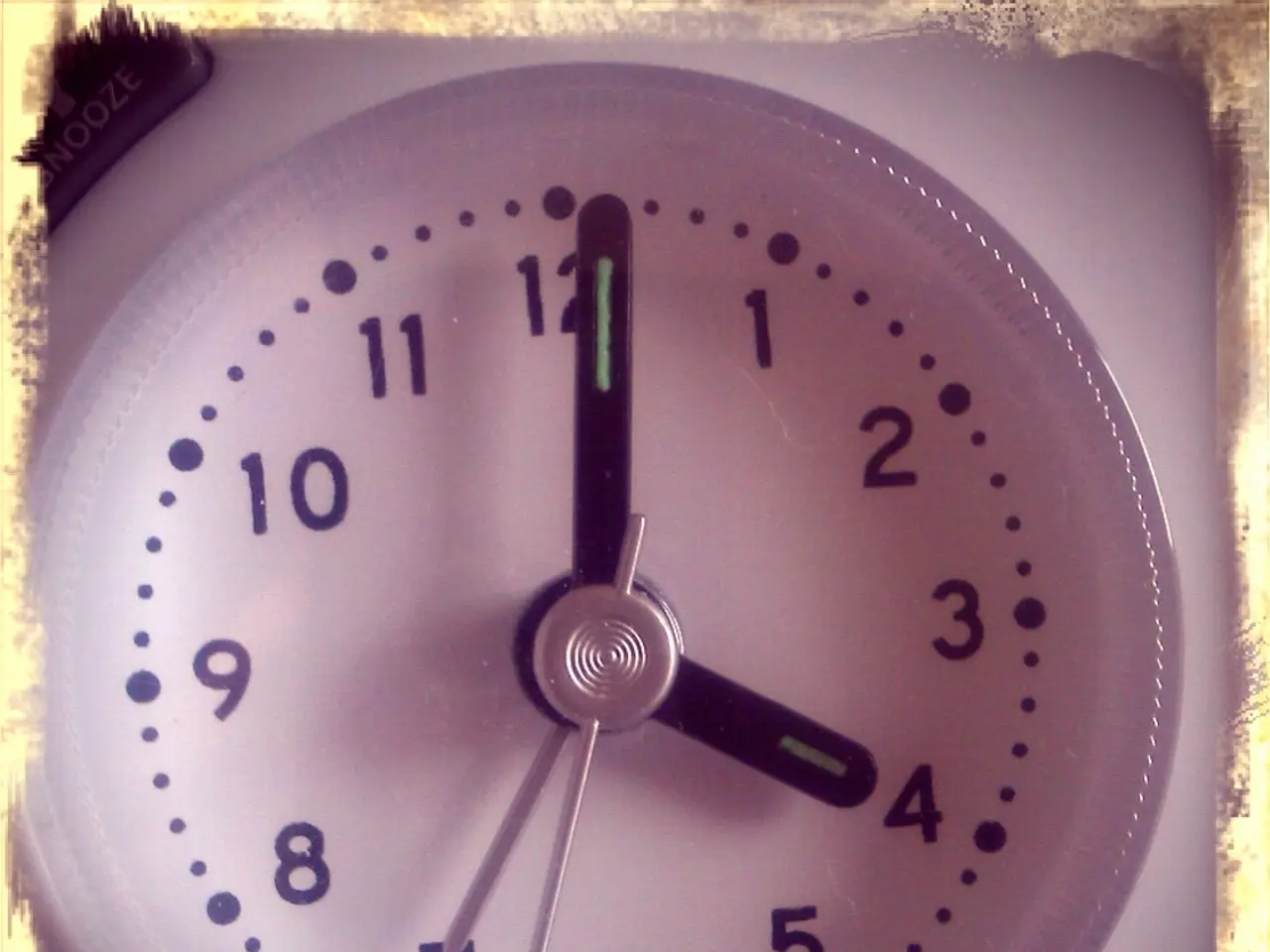Exploring the Clock Reaction Experiment: A Comprehensive Student Companion
Understanding the Thrilling 'Clock Reaction' in Chemistry Education
The 'Clock Reaction' experiment, a staple in chemistry education, is a captivating demonstration of chemical reactions that never fails to intrigue students. This experiment involves mixing two or more clear solutions containing specific reactants, and observing the time delay before a sudden color change occurs, typically to blue or another dramatic colour.
One of the most common versions of this experiment is the iodine clock reaction, including the 'Old Nassau' or 'Halloween' clock reaction. These variations are often used for post-16 or undergraduate students to study kinetics and redox processes.
Preparing for the Experiment
The experiment begins with the preparation of reagents. Solution A is prepared by dissolving key chemicals such as potassium iodide (KI), soluble starch, sodium thiosulfate (Na₂S₂O₃), and acid like acetic acid in water. Solution B contains an oxidizing agent like potassium iodate (KIO₃) and sometimes mercury(II) ions (Hg²⁺) depending on the clock reaction variant.
The Dramatic Reaction
Once the solutions are ready, they are mixed rapidly, and the timing starts immediately. Initially, the solutions remain colourless or lightly coloured. After a reproducible time delay, known as the "clock time", the solution suddenly changes colour, either turning blue-black due to the formation of the starch-iodine complex or orange due to precipitated mercury(II) iodide, depending on the reaction used.
The Chemistry Behind the Spectacle
In the ‘Old Nassau’ clock reaction, iodate ions are reduced by hydrogensulfite ions formed from metabisulfite. This produces iodide ions that react with mercury(II) ions, precipitating orange HgI₂. After the mercury(II) ions are consumed, free iodine is released, which reacts with starch to give the blue-black complex.
Kinetic Analysis
The time taken for the colour change under different conditions (varying concentrations, temperature, etc.) is measured. These times are used to calculate reaction rates and study the effect of variables on the reaction kinetics. This experiment illustrates concepts of reaction rate, order, and the sudden appearance of a reaction intermediate.
Key Educational Points
- The clock reaction visually demonstrates a fast chemical reaction following an induction period.
- It provides insight into redox mechanisms and precipitation.
- It can be used to extract quantitative data for kinetic studies, such as rate constants.
Practical Skills and Theories
The clock reaction helps develop practical lab skills like timing, measurement, and data analysis. Moreover, it relates to the collision theory and activation energy, offering a clear, visual demonstration of reaction kinetics.
Safety First
When handling chemicals, it's essential to maintain precise timing and consistent conditions, and to use proper safety procedures. RevisionDojo offers detailed explanations of kinetics and the clock reaction, step-by-step guides for lab reports and experiments related to the clock reaction, and practice questions and mock tests on reaction rates related to the clock reaction.
Analysing the Data
Students plot graphs to understand the relationship between variables and reaction rates in the clock reaction experiment. They study the clock reaction by preparing reactant solutions, mixing them under controlled conditions, starting a timer, and recording the time taken for the solution to change colour. They repeat the experiment for different concentrations, temperatures, or catalysts to analyse the effects on reaction rates.
Understanding Reaction Rates
Students calculate reaction rates based on the inverse of the clock time in the clock reaction experiment. Repeating trials for accuracy is important when studying the clock reaction. The clock reaction demonstrates how reaction rates can be affected by concentration, temperature, and catalysts.
In conclusion, the clock reaction is a chemical experiment used to study reaction kinetics, providing a hands-on approach to understanding reaction rates, mechanisms, and the effects of variables on these rates.
- To reinforce learning about reaction kinetics and redox processes, consider practicing some education-and-self-development questions focused on the 'Clock Reaction' experiment.
- In the context of chemistry education-and-self-development, grasping the kinetics behind the 'Clock Reaction' can be solidified through practice questions that involve examining the time delays before a sudden color change occurs.



![Layoffs: What's the Optimal Approach? [Data + Visual Guide]](/en/content/images/size/w640/format/webp/20250817093316_tech-layoffs-in-2022.jpeg)
